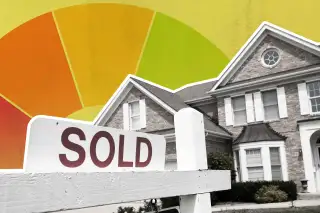10 Million More People Could Qualify for Mortgages Thanks to New Credit Score Rule

An estimated 10.7 million additional people could qualify for mortgages thanks to upcoming changes to lender credit scoring models. Black households in particular are expected to benefit.
On Monday, the Federal Housing Finance Agency (FHFA) announced that it will require mortgage lenders to incorporate credit scores from VantageScore when evaluating potential borrowers. Lenders will also need to transition to a new version of the FICO score for the first time in nearly two decades.
Critically, both the VantageScore and the new FICO score will include information about a borrower's rent, utility and phone payments.
“Requiring both credit scores, when available, will result in more borrowers that can be evaluated,” said FHFA Director Sandra Thompson in remarks at the Mortgage Bankers Association Annual Convention Monday.
The two scores, she said, should help lenders manage risk “while also responsibly and sustainably expanding access to credit for borrowers with less robust credit histories.”
The FHFA sets the guidelines for loans that can be purchased by Fannie Mae and Freddie Mac — government-sponsored enterprises that support the mortgage market by buying loans from lenders. Requirements include a maximum loan size (currently $726,200 across most of the country) and a minimum borrower credit score (620).
Lenders often won’t make loans that fall outside these conditions because they can’t sell them, increasing their risk and cost. The FHFA hopes that the changes it announced will allow more people to qualify. However, FHFA did not set a deadline for the new policies to be implemented, describing it as a “multiyear effort.”
Who benefits from the FHFA’s credit scoring change?
The FICO score became a key part of the mortgage underwriting process in the 1990s. It brought efficiency and cost savings and was also shown to be a better predictor of on-time payments than some other common metrics.
However, FICO and other credit scores did not capture things like on-time rent or utility payments that previously had been included in a manual underwriting process. This omission has disproportionately affected Black households, which tend to have less history of traditional borrowing.
“Lenders rely on credit history and credit scores to determine mortgage eligibility and loan pricing, but Black households have regularly experienced greater difficulties accessing the same services that have allowed white households to build strong credit profiles,” notes a recent Urban Institute report about the potential impacts of using alternative data in mortgage underwriting.
FICO itself estimates 53 million people do not have enough credit history to be scored by the model currently used by mortgage lenders. Moreover, Black households are disproportionately likely to have no FICO score or to have a score below 620.
However, VantageScore estimates that it can provide credit scores for 37 million people that FICO does not currently capture. Of those, the company estimates 10.7 million will have a score of 620 or above, including approximately 4 million “minority borrowers.”
“This action today will enable millions more Americans to have access to mortgages because of VantageScore’s more predictive credit score…and it will correct some historical imbalances we’ve had for conforming mortgages,” said VantageScore CEO Silvio Tavares, according to The Wall Street Journal.
More from Money:
Paying Your Rent on Time Can Now Help You Qualify for a Mortgage
An Opaque Web of Credit Reports Is Tracking Everything You Do
FICO vs. VantageScore: The Difference Between the Credit Scores and Why It Matters